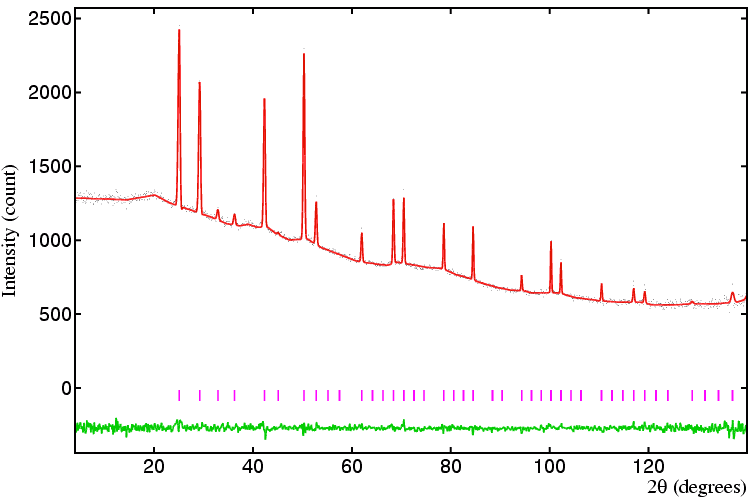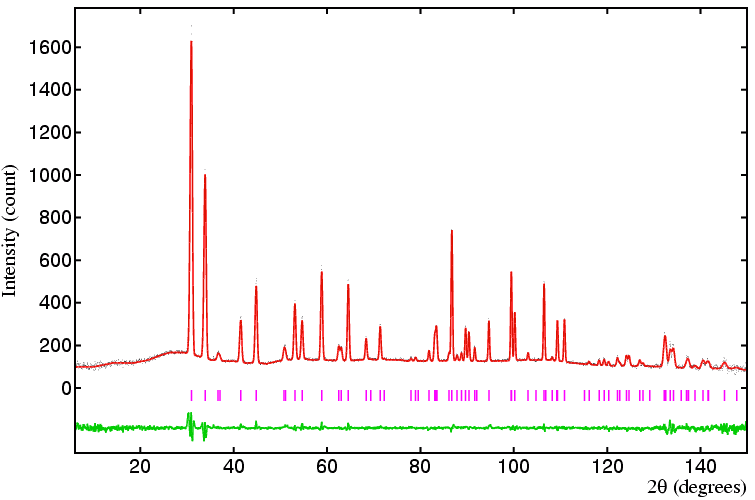
The first figure shows the powder neutron diffraction data on HBr phase Ib (collected in 1976 on D1A at the ILL, Grenoble). The majority of the very high background is due to the incoherent scattering of the hydrogen in HBr. The remainder of the background is attributable to the quartz-glass sample holder and dynamic disorder in the sample. The data would probably be unusable but for the fact that crystal structure at this temperature is cubic: the relatively weak Bragg scattering is therefore concentrated into just a few peaks. You might wonder why data was collected on a protonated sample in this instance given the problems of the incoherent scattering of HBr. The answer is that the equivalent phase does not exist for DBr due to the isotopic effect on the phase transition temperature.


| © Copyright 1997-2006. Birkbeck College, University of London. | Author(s): Jeremy Karl Cockcroft |